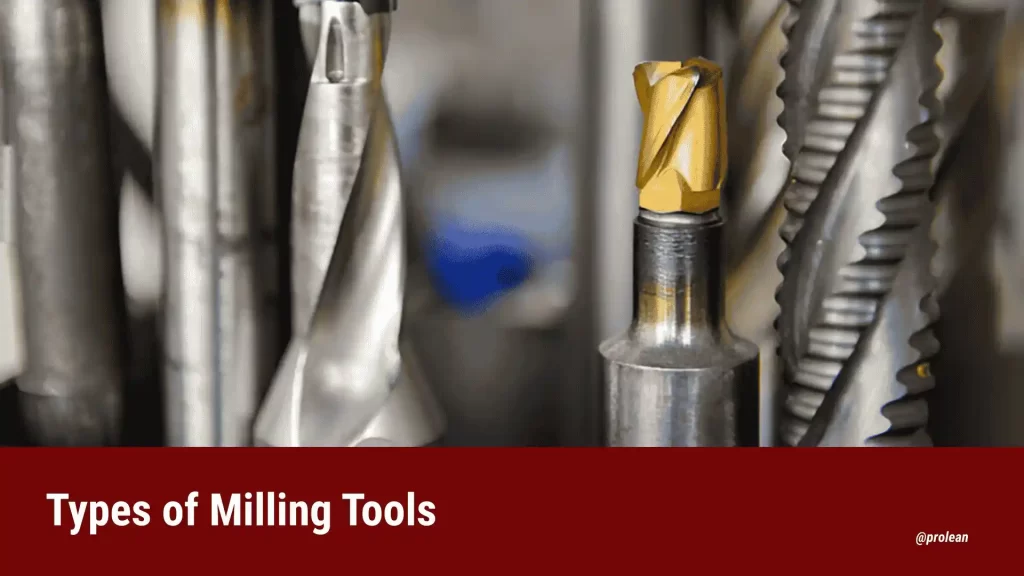
Types of Milling Tools
Among so many types of milling tools, sometimes, it becomes challenging to choose the right one. The wrong cutter increases machining cost, reduces tool life, and affects part quality. To better avoid this issue, you should consider surface finish requirements, depth of cut, material hardness, and machining time. At Proleantech, we help you choose the right milling tool to mitigate such issues and ensure you get parts made right as per your design specs.
A milling tool is a rotary cutting chisel used in CNC milling operation. It has multiple cutting edges that chiefly remove material from a workpiece. These tools come in different types. Each is designed for a specific job. Here are some common types of milling tools/cutters:
- End Mill
- Cylindrical End Mill
- Three-Edge End Mill
- Keyway Milling Cutter
- Thread Mill
- Form Milling Cutter
- Gear Milling Cutter
- Angle Milling Cutter
- Hollow Mill
- Chamfer Mill
- Saw Blade Milling Cutter
The types mentioned above are just the basic types of milling tools. In the following sections, we will explore all milling cutters and their uses, helping you understand how each plays a role in the machining process.
What Are Milling Bits?
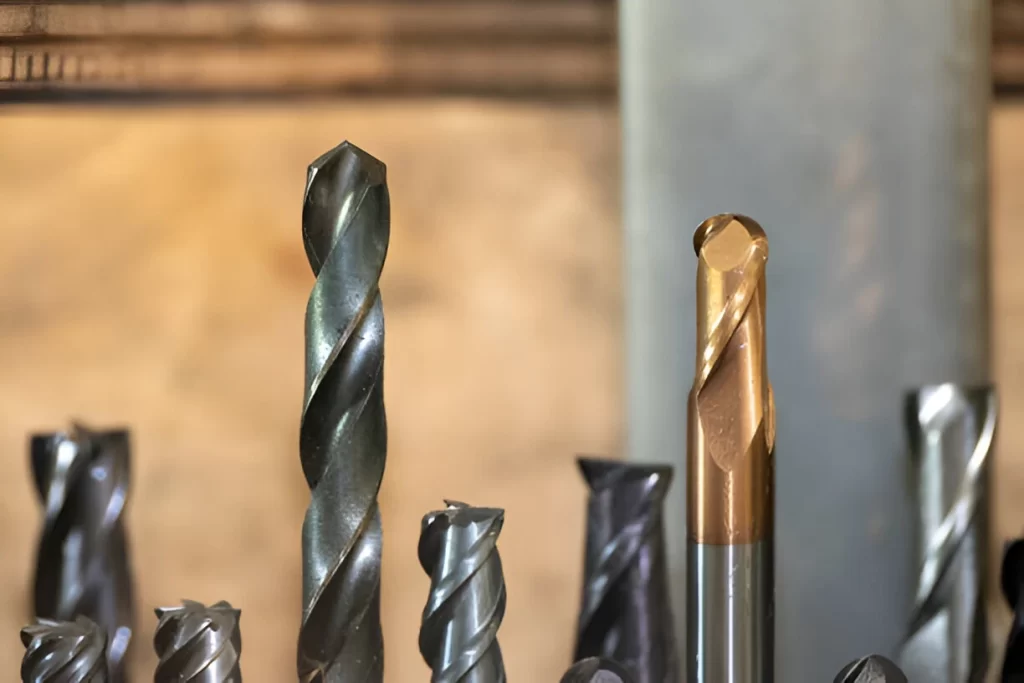
Milling Bits
A milling tool (or a milling cutter or milling bit) is a rotating cutting tool used in milling machines and CNC centres. It has multiple teeth that remove small amounts of material from a workpiece with each rotation.
The tool spins to cut, while the workpiece moves in a straight line or along a curve. Milling tools create flat surfaces, grooves, steps, angled edges, and complex shapes accurately and efficiently.
Parts of a Milling Cutter
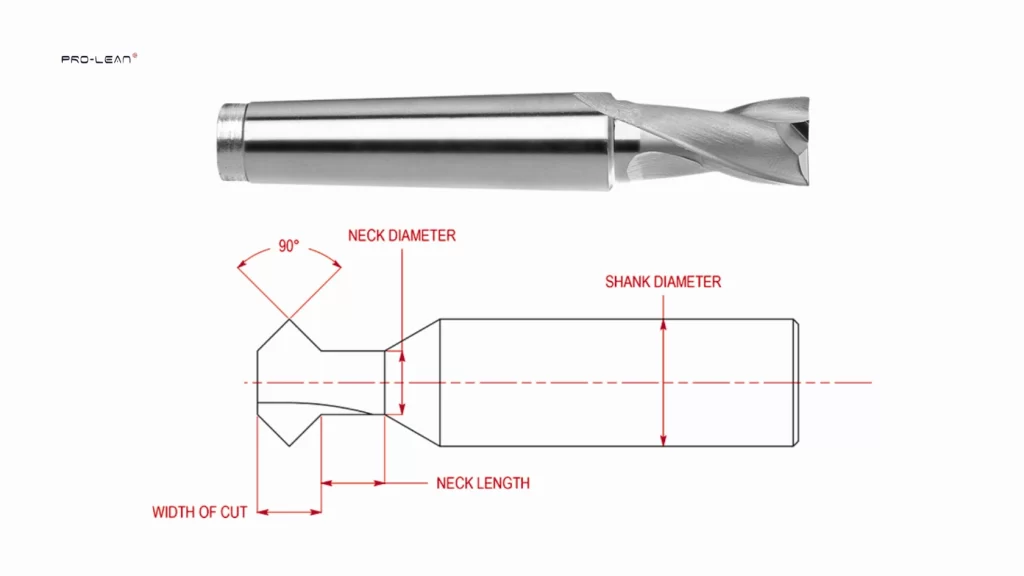
Parts of the Milling Cutter
Before we get deeper into different types of milling machine cutters, it’s better to know how they are built. A milling cutter consists of three primary components:
- Shank,
- Body
- Cutting Edge
The role of each part is significant in validating that the cutter’s work is efficient. The shank is inserted into the machine spindle, keeping the cutter in place. It is generally strong and attached to the cutting part by the body. Actual work is done at the cutting edge, which removes material using its teeth, tip, and leading edges.
Types of Milling Tools For Custom Machining Parts
With many machining processes today, different milling tools types evolved to serve specific tasks. Here are some common specialized types of milling cutters and their use.
End Mill
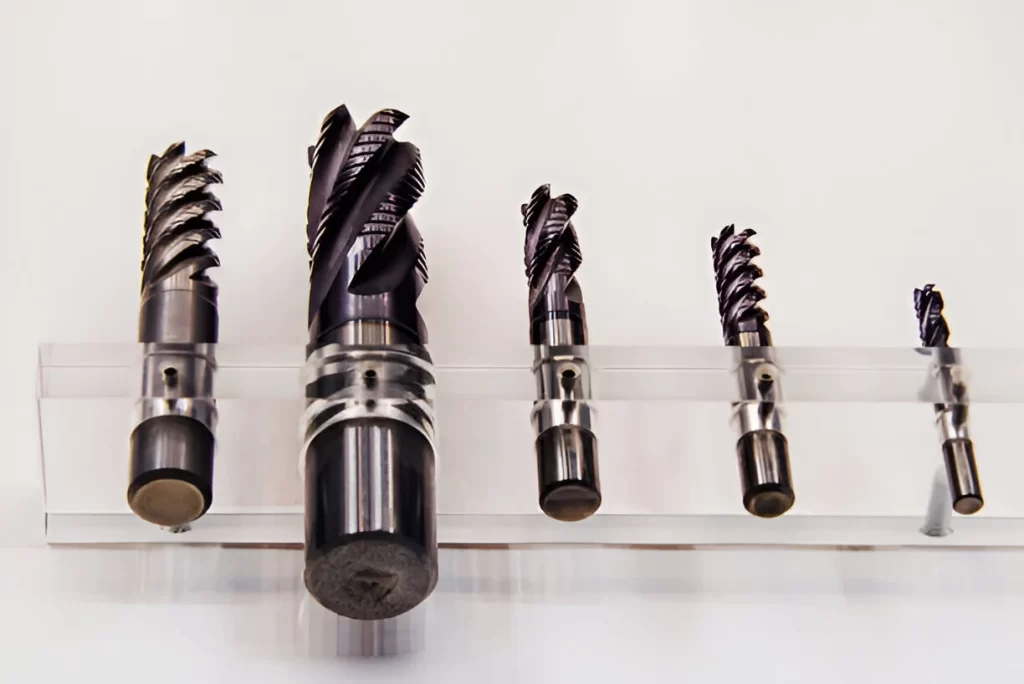
Carbide End Mills
The most commonly used milling bits are end mills, or straight shank mills. They are suited to small to medium milling. The cutting teeth are present in both the tip and the sides of the end mills, and as such, they can be used to drill and mill simultaneously. These apply to workpieces with perpendicular walls to the bottom.
Square End Mills
These are most generally end mills, but have a flat square tip. They are ideal for producing square slots, pockets, and edges.
Roughing End Mills
Roughing end mills have serrated teeth. These are used to excavate material in a short time, and when the surface finish is not so important, like rough machining.
Ball End Mills

Ball End Mill
The shape of ball end mills is like a ball. They apply to contour, curved, and 3D profiling. They are used in finishing jobs that require smooth curves.
Radius End Mills
Radius end mills have a rounded tip with a specified radius. They are used to mill bulge corners, fillets, and complicated shapes.
Drill End Mills
As the name suggests, drill end mills combine end mills and drills. They can drill and mill in a single tool. These versatile cutters reduce the time spent on changing tools.
Try Prolean Now!
Cylindrical End Mill
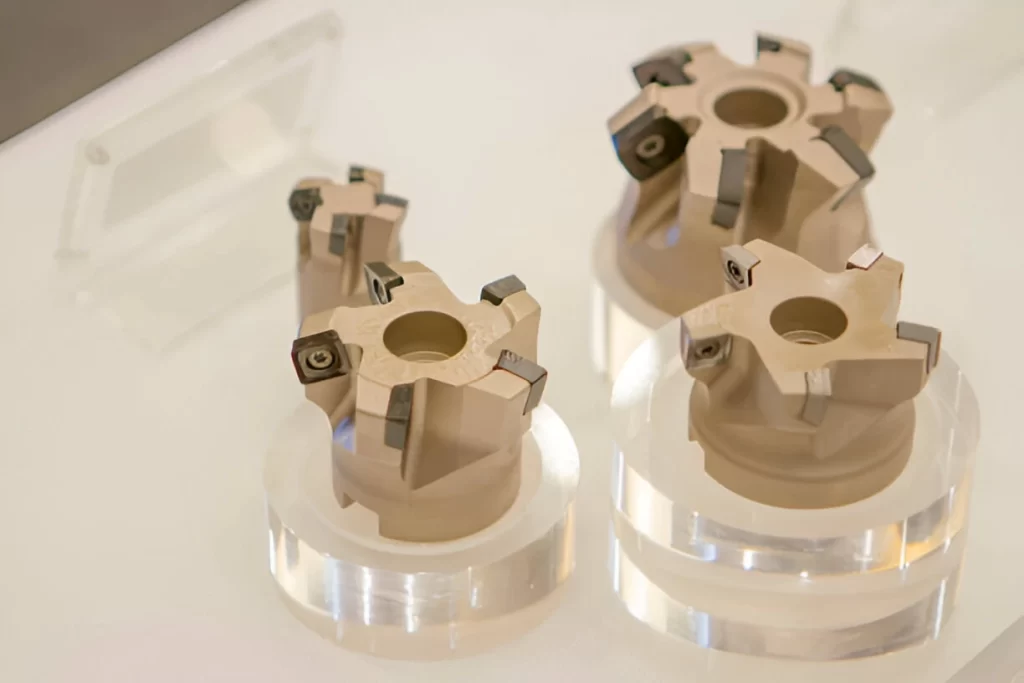
Cylindrical Mill Cutter
Plain (or cylindrical) milling cutters are arbour-mounted tools used to cut a flat face, typically on a horizontal milling machine. The cutters have different-shaped teeth and different pitches. Gears made using these cutters may be either spur or helical, depending on tooth shape, coarse or fine-pitch, and number of teeth. (Also read: depth of cutting)
Three-Edge End Mill
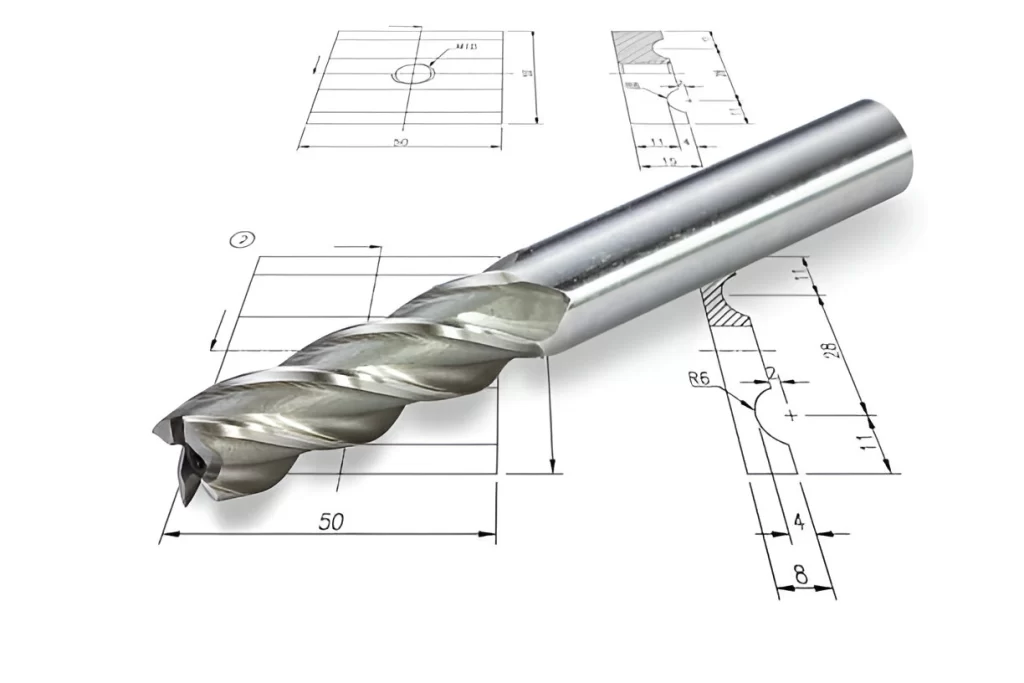
3 Flute Carbide Finisher End Mill
A three-edge end mill is a cutting tool used in a horizontal milling machine. It precisely produces groove, step, and slot. The three cutting edges penetrate the workpiece simultaneously, producing similar forces across the cutting surfaces and eliminating vibration.
Keyway Milling Cutter
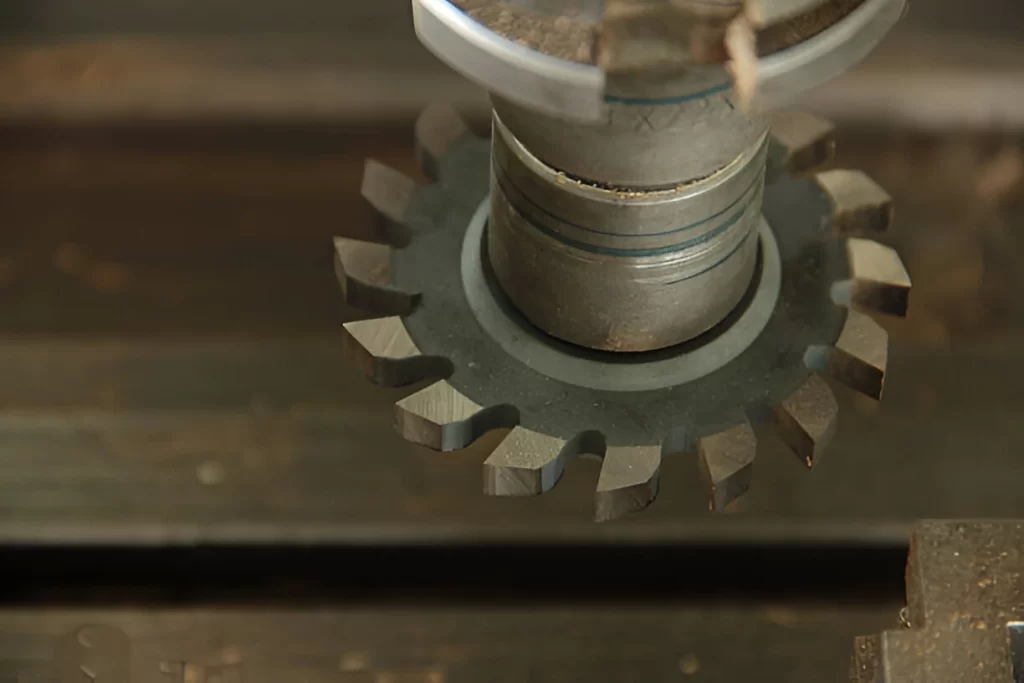
Keyway Slot Milling Cutter
The keyway milling cutter, also called a T-slot cutter. It has two cutting edges and no hole cut down the middle. It is designed to cut keyways, T-slots, and highly accurate grooves with sharp edges.
Saw Blade Milling Cutter
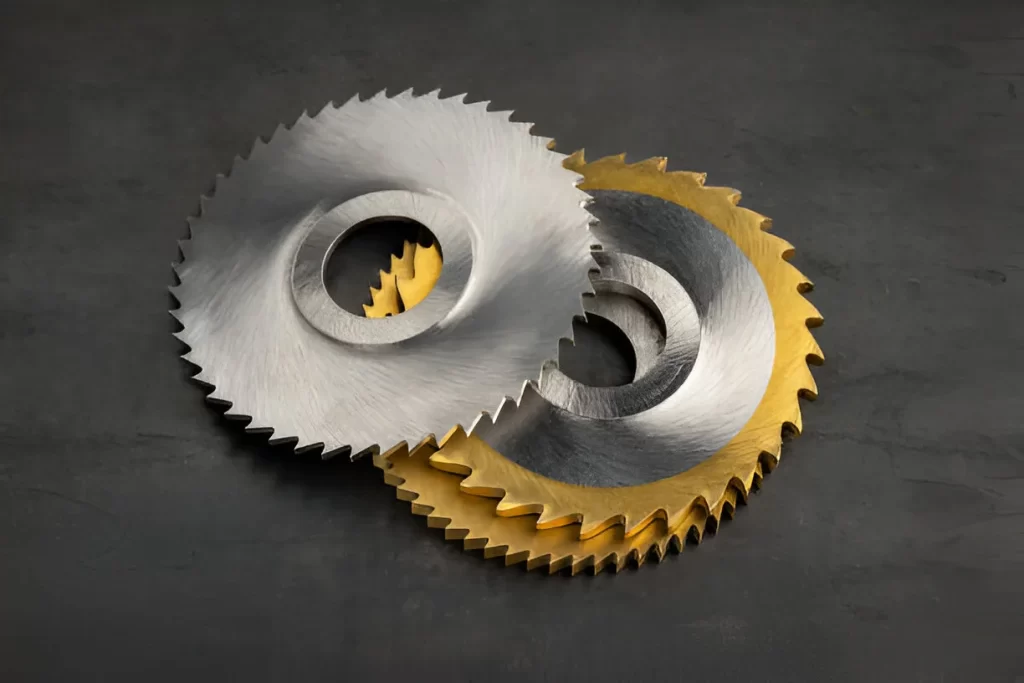
Saw Blade Mill Cutter
Saw blade milling cutters have narrow, closely spaced teeth that efficiently remove material in deep and minor grooves. They are used for cutting narrow slots or for parting-off operations. Due to their thin profile, feed rates must be controlled carefully to avoid tool breakage.
Face Milling Cutter
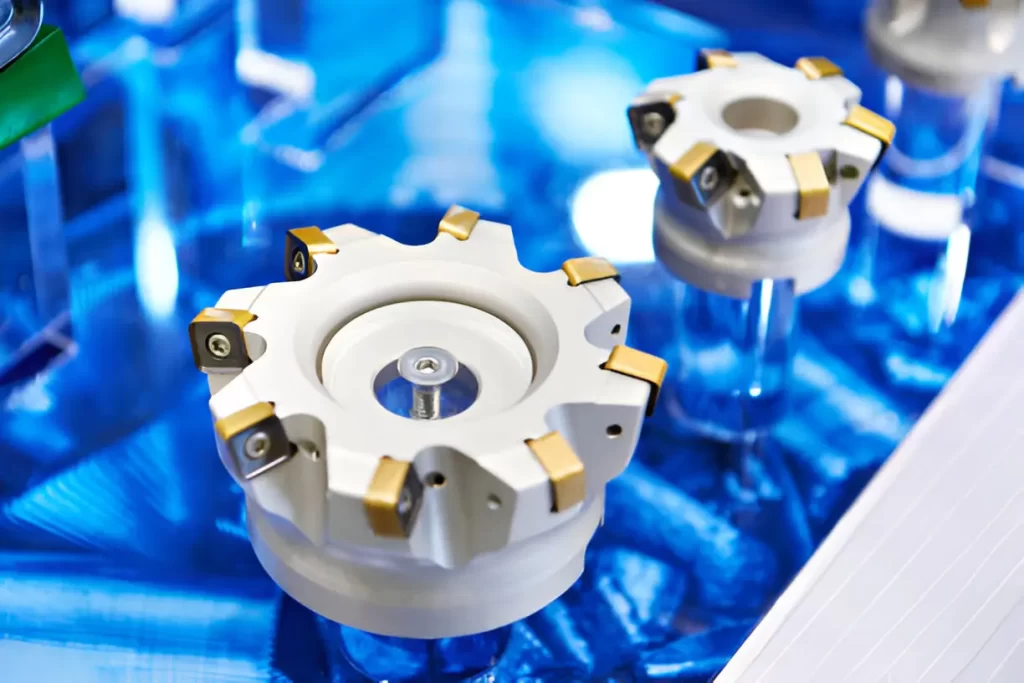
Face Mill Cutter
Face milling cutters are used to mill flat surfaces at high precision. The edges are placed on the side and can be opened horizontally at regulated depths. The insert-tooth cuts are easy to replace and sharpen, and produce the same cutting characteristics.
Angle Milling Cutter
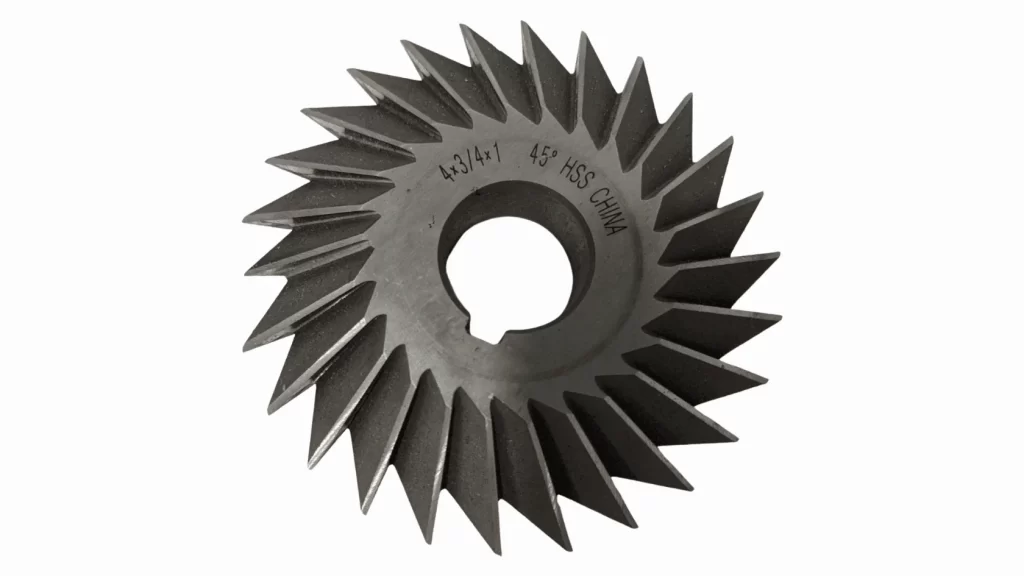
Interstate HSS Double Angle Cutter
The angle milling cutters are developed to form fine angles and grooves in workpieces. They are of two major types, single-angle milling cutters (18deg to 90deg; 6 to 35mm thick) and two-angle (also known as double-angle) milling cutters (30deg to 120deg; 10 to 45 mm thick). These cutters are employed when angular features are required.
Try Prolean Now!
Form Milling Cutter
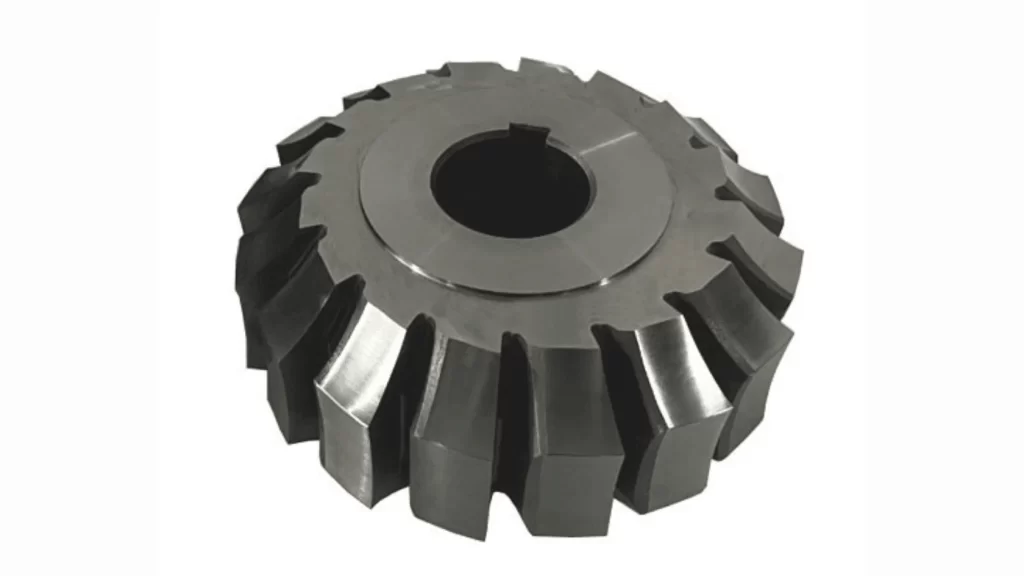
Form Milling Cutter
Milling cutters are formed to create the ultimate profile of the workpiece. They may have a variety of tip shapes, edges, and tool materials, and are thus appropriate to complex or curved surfaces. The majority of form cutters are custom-made to the shape of the component.
Convex Milling Cutters
Convex cutters are rounded or outwardly curved. They are used to machine concave features, e.g, grooves with a semicircular bottom.
Concave Milling Cutters
Concave cutters are used for inward-facing. They also have machine features such as bosses with semicircular tops.
Corner Rounding Milling Cutters
These tools are also known as bullnose cutters. They contain a semicircular tool edge to smooth the sharp edges and create curving edges.
Gear Milling Cutter
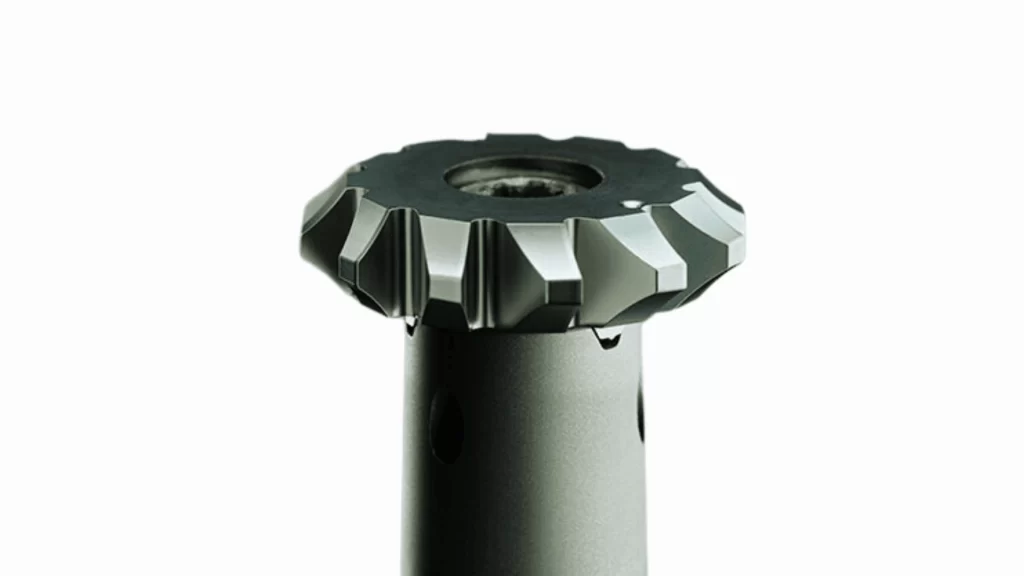
Gear Milling Cutter
A gear milling cutter is a profile-milling tool that cuts along a gear profile. It allows accurate tooth and gear profiles, particularly when requiring single-piece manufactured items and specialized gears.
Hollow Mill
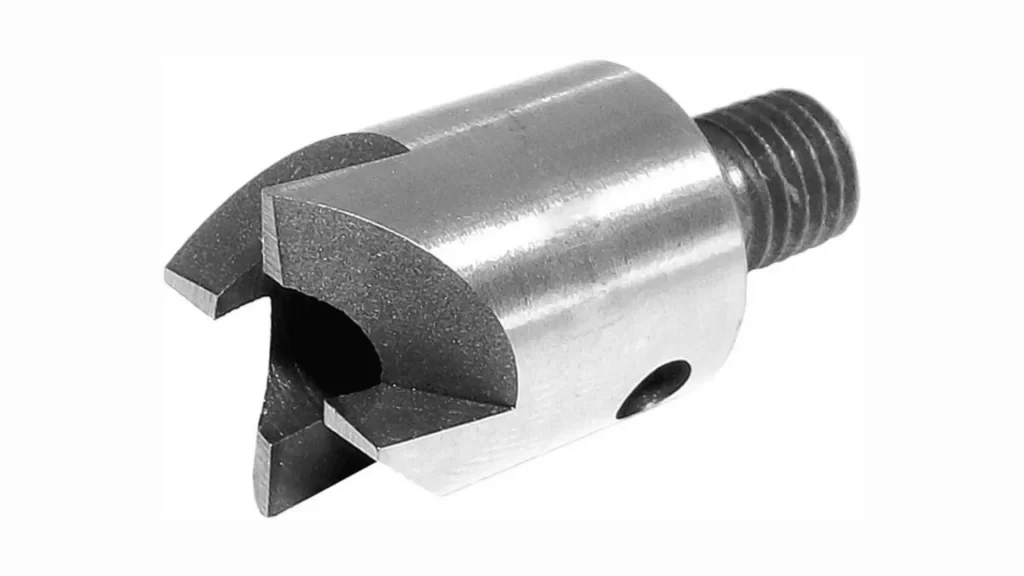
Hollow Mill Cutter
The hollow milling cutters are hollow with the teeth located on the outer part of the body. These cutters can be mounted on an arbour because the centre is hollow. They are perfect for producing the same pre-thread diameter in large quantities.
Thread Mill
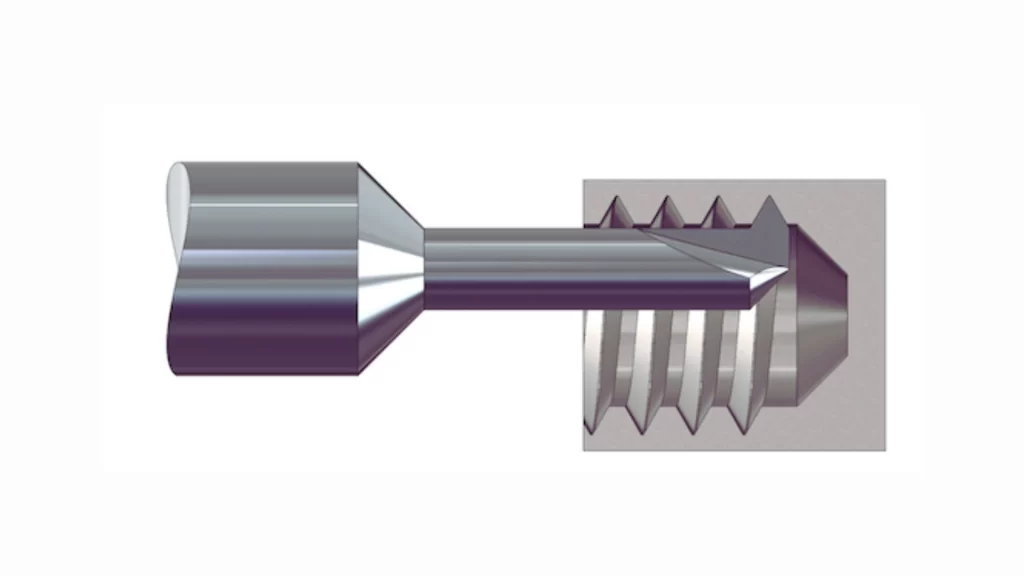
Thread Milling Cutter
Thread milling is a process that uses a cutter to form a helical path, which forms an external or internal thread. This process enables the setting of thread pitch, depth, and profile with perfect accuracy in a single pass. Compared with traditional tapping, it gives the benefits of not being affected by the spindle rotating speed and can reduce the cutting force.
Chamfer Mill
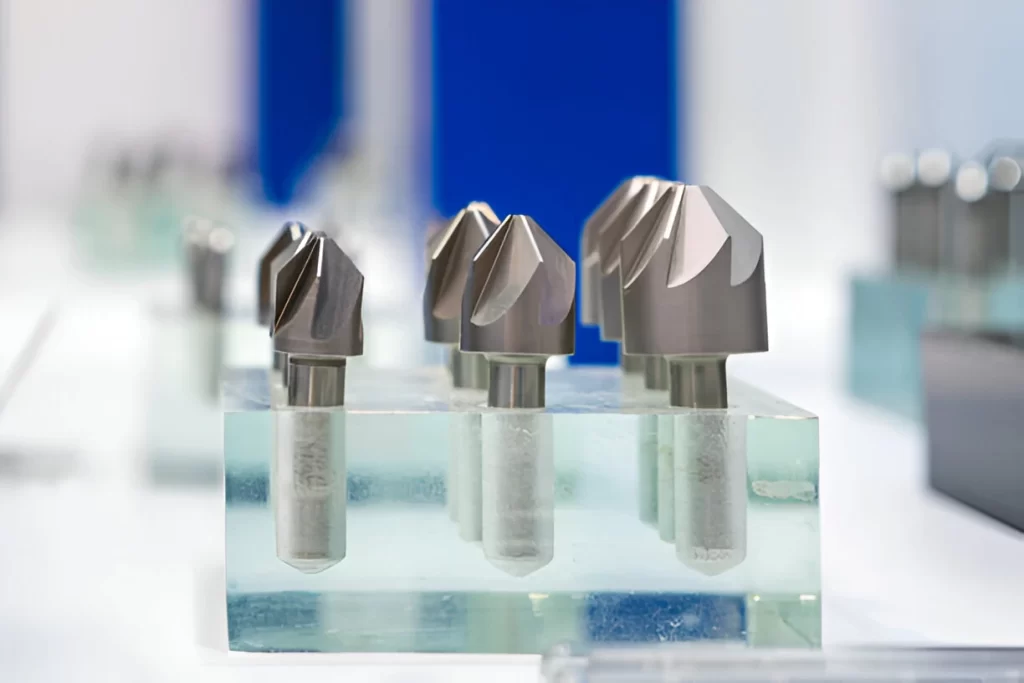
Chamfer End Mills
Chamfer mills cut away material from edges to create precision bevelled and rounded corners. The cutting edges are equipped with different cutting angles and radii according to the demand for the chamfer. This assures consistent edge geometry as well as reduces burr formation in critical parts.
How to Make a Choice Between Different Types of Milling Tools
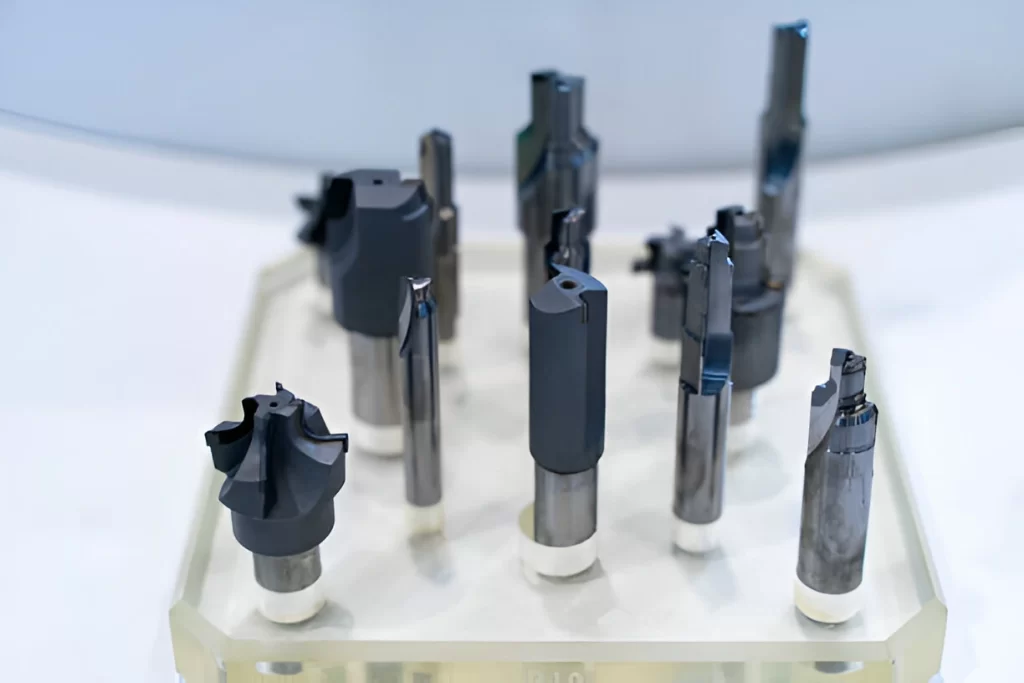
Milling Machine Cutters
The milling tool must be carefully chosen. You must consider cutting conditions, workpiece properties, and tool geometry. Each factor directly impacts machining accuracy, surface finish, and tool life. Here is how to make a sound choice for a milling cutter type.
Blade Selection
Ground blades are for precision work. The tight tolerance of the blades ensures each cutting edge is positioned accurately. This precise orientation creates a consistent surface finish and exact workpiece dimensions.
For heavy cut-off, the pressed blades are preferred. They offer increased edge strength and impart durability with high cutting speed and feed rate that do not chip and cause premature wear.
Tooth Count and Chip Evacuation
The number of cutters affects chip evacuation and load distribution. Coarse-tooth cutters with great chip spaces, such as a 6-tooth cutter on a 100mm diameter, can efficiently cut under higher cutting loads. They can be used for roughing operations.
As a general guideline, fine-tooth cutters, with smaller chip loads, are better for precision milling, where the cutting depth per tooth is low. Only moderate material removal is required to minimise vibration and promote reasonable dimensional control.
Cutter Diameter
Tool diameter must be matched to the machine’s capability and the workpiece geometry. For the face milling, the diameter should be about 1.5 times the diameter of the spindle.
In industrial milling operations, the diameter is 1.6X the workpiece cutting width, which is more stable and has better load distribution. The end milling diameter should match the width and depth of the milled feature.
Material and Hardness
Cutter material should be in accordance with the workpiece hardness and machinability. High-velocity operations, high-speed steel for moderately complex materials, cemented carbide for hard alloys, ceramics, and PCD/CBN for rigid and brittle materials.
Conclusion
Selecting the right milling tool means understanding its function and matching it to the material and machining task.
ProleanTech brings a wealth of expertise from over a decade of milling custom profiles. We offer quick delivery, and our methods are ISO-certified. Our engineers will help you pick the right tools that provide accuracy, efficiency, and consistent outcomes. For advice and comprehensive support with custom CNC milling services, contact ProleanTech and get a quote.
FAQ’s
Q1: What is a flute in a milling cutter?
A flute is a groove cut along the body of a milling cutter. It guides the chips away from the cut and allows coolant to reach the cutting edge. It influences how many edges the tool can cut.
Q2: Why does a milling cutter have two clearance angles?
Two clearance angles are included to prevent the cutter from rubbing against the workpiece. They allow smoother cutting, help chips move away easily, and reduce tool wear.
Q3: What is the difference between drill bits and milling cutters?
Drill bits are used to make holes by moving straight into the material. On the other hand, milling cutters usually cut in different directions. They are used to create slots, steps, contours, and complicated shapes.

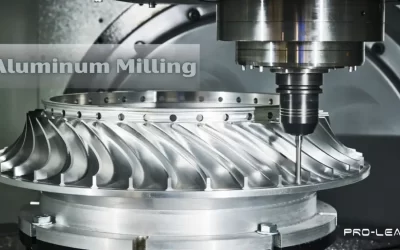

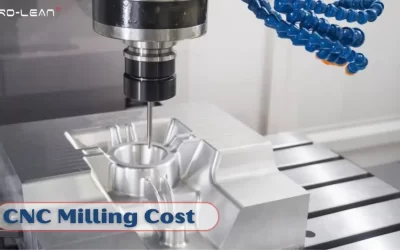
0 Comments